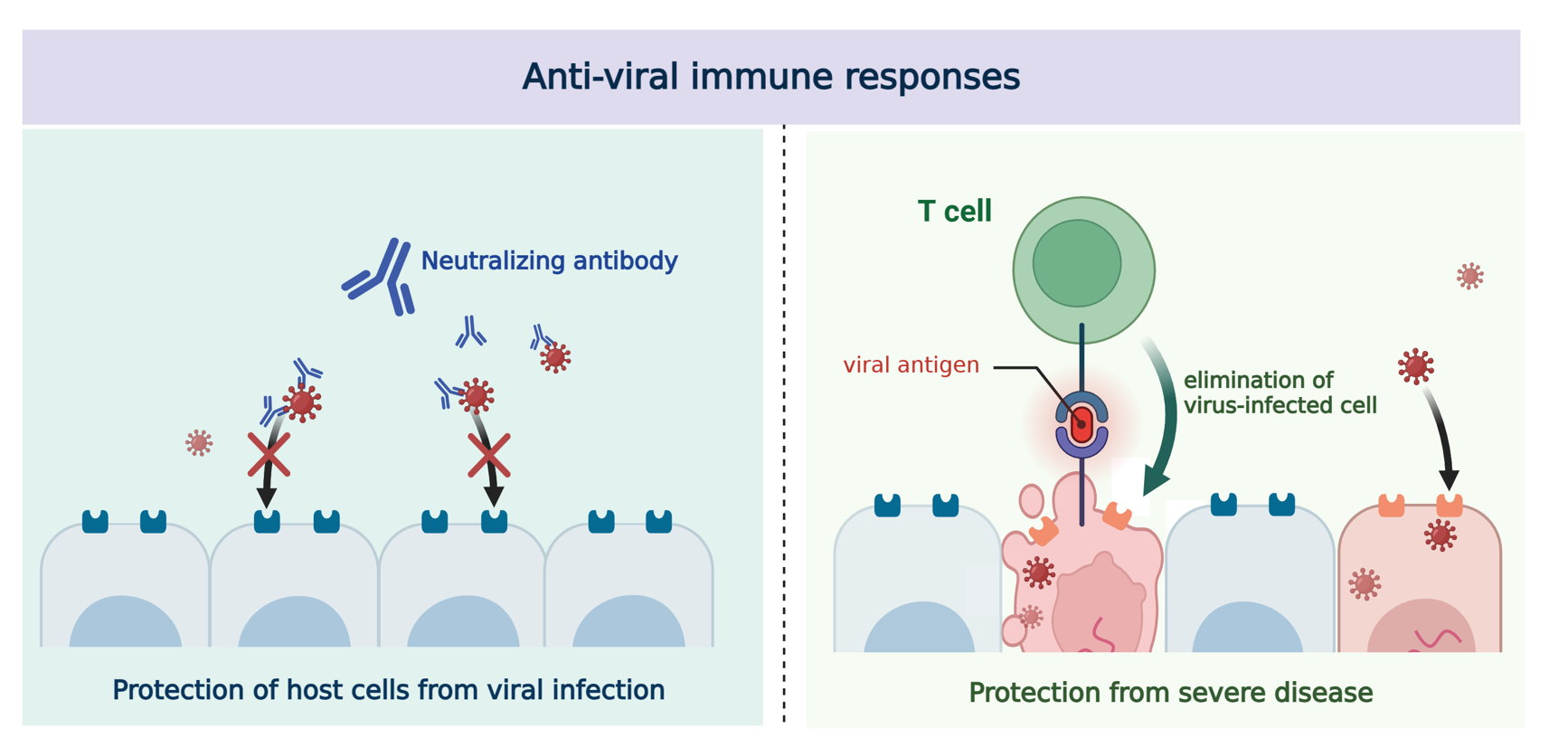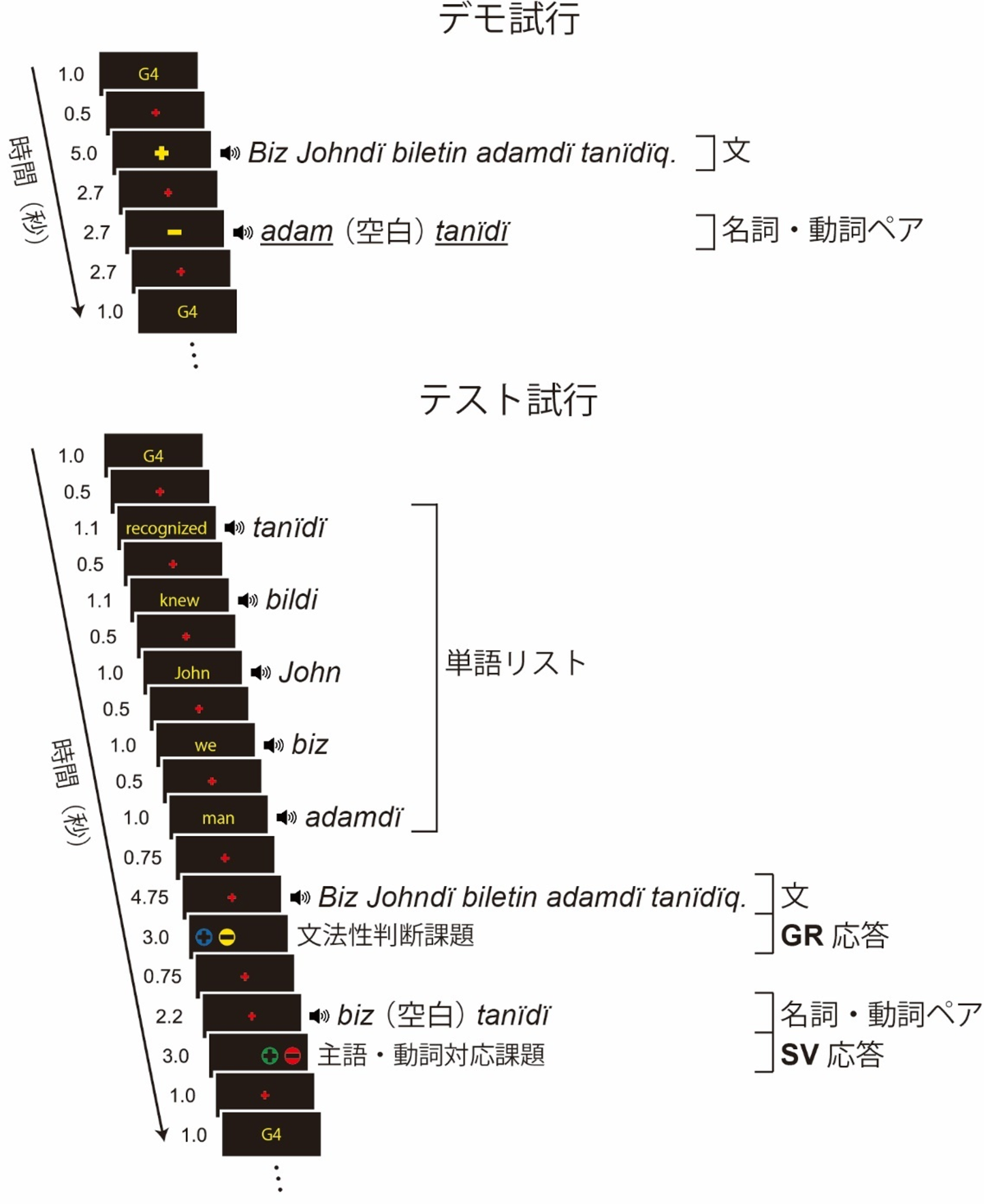2024-01-12 韓国基礎科学研究院(IBS)
Figure 1. Immunological role of the neutralizing antibodies and memory T cells
Neutralizing antibodies and memory T cells are two components of adaptive immunity conferred by viral infection or vaccination. Neutralizing antibodies physically bind to viruses to block them from infecting the cells. While T cells cannot prevent the viral infection, they can effectively search and destroy cells that display viral antigens on their surface, eliminating them to prevent further infection.
◆韓国の研究チームは、Omicron変異株によるワクチン接種後感染を経た患者のメモリーT細胞が、将来のOmicron変異株に対して強化された免疫を獲得することを発見しました。この研究により、Omicron感染を経験することで、将来の変異株による重症なCOVID-19症状を回避できる可能性が示唆されています。
<関連情報>
- https://www.ibs.re.kr/cop/bbs/BBSMSTR_000000000738/selectBoardArticle.do
- https://www.science.org/doi/10.1126/sciimmunol.ade6132
オミクロンBA.2の感染により、後のオミクロン亜型のスパイクを認識するCD8+ T細胞応答が誘発される。 Omicron BA.2 breakthrough infection elicits CD8+ T cell responses recognizing the spike of later Omicron subvariants
Sang-Hoon Kim, Jihye Kim, Sungmin Jung, Ji Yun,
Science Immunology Published:19 Jan 2024
DOI:https://doi.org/10.1126/sciimmunol.ade6132
Editor’s summary
Recent studies have suggested that memory T cells play a critical role in protecting individuals immunized with SARS-CoV-2 vaccines against variants. Kim et al. tracked memory T cell responses in a cohort of vaccinated individuals in Korea who experienced breakthrough Omicron subvariant infection. They confirmed that BNT162b2 vaccination induced memory CD4+ and CD8+ T cells specific to BA.4/BA.5 spike, even if these individuals had a prior SARS-CoV-2 infection. Breakthrough infection with early Omicron subvariants (BA.1/BA.2) induced an increase in cross-reactive CD8+ T cell responses specific to BA.4/BA.5 spike. They identified peptides in the BA.2 spike that were fully conserved in BA.4/BA.5 and later subvariants but absent in original spike. Together, these findings provide further evidence that breakthrough infection can induce cross-reactive memory T cell responses that contribute to protection against newly emerging SARS-CoV-2 subvariants. —Christiana Fogg
Abstract
Here, we examine peripheral blood memory T cell responses against the SARS-CoV-2 BA.4/BA.5 variant spike among vaccinated individuals with or without Omicron breakthrough infections. We provide evidence supporting a lack of original antigenic sin in CD8+ T cell responses targeting the spike. We show that BNT162b2-induced memory T cells respond to the BA.4/BA.5 spike. Among individuals with BA.1/BA.2 breakthrough infections, IFN-γ–producing CD8+ T cell responses against the BA.4/BA.5 spike increased. In a subgroup with BA.2 breakthrough infections, IFN-γ–producing CD8+ T cell responses against the BA.2-mutated spike region increased and correlated directly with responses against the BA.4/BA.5 spike, indicating that BA.2 spike–specific CD8+ T cells elicited by BA.2 breakthrough infection cross-react with the BA.4/BA.5 spike. We identified CD8+ T cell epitope peptides that are present in the spike of BA.2 and BA.4/BA.5 but not the original spike. These peptides are fully conserved in the spike of now-dominant XBB lineages. Our study shows that breakthrough infection by early Omicron subvariants elicits CD8+ T cell responses that recognize epitopes within the spike of newly emerging subvariants.


